Xudong Sun
Addressing pitfalls in implicit unobserved confounding synthesis using explicit block hierarchical ancestral sampling
Mar 12, 2025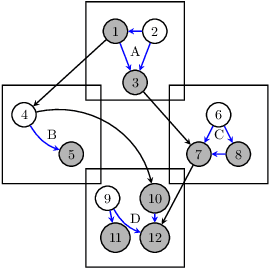

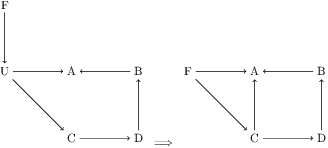
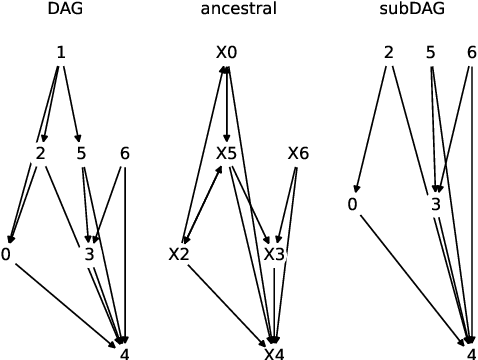
Abstract:Unbiased data synthesis is crucial for evaluating causal discovery algorithms in the presence of unobserved confounding, given the scarcity of real-world datasets. A common approach, implicit parameterization, encodes unobserved confounding by modifying the off-diagonal entries of the idiosyncratic covariance matrix while preserving positive definiteness. Within this approach, state-of-the-art protocols have two distinct issues that hinder unbiased sampling from the complete space of causal models: first, the use of diagonally dominant constructions, which restrict the spectrum of partial correlation matrices; and second, the restriction of possible graphical structures when sampling bidirected edges, unnecessarily ruling out valid causal models. To address these limitations, we propose an improved explicit modeling approach for unobserved confounding, leveraging block-hierarchical ancestral generation of ground truth causal graphs. Algorithms for converting the ground truth DAG into ancestral graph is provided so that the output of causal discovery algorithms could be compared with. We prove that our approach fully covers the space of causal models, including those generated by the implicit parameterization, thus enabling more robust evaluation of methods for causal discovery and inference.
DomainLab: A modular Python package for domain generalization in deep learning
Mar 21, 2024
Abstract:Poor generalization performance caused by distribution shifts in unseen domains often hinders the trustworthy deployment of deep neural networks. Many domain generalization techniques address this problem by adding a domain invariant regularization loss terms during training. However, there is a lack of modular software that allows users to combine the advantages of different methods with minimal effort for reproducibility. DomainLab is a modular Python package for training user specified neural networks with composable regularization loss terms. Its decoupled design allows the separation of neural networks from regularization loss construction. Hierarchical combinations of neural networks, different domain generalization methods, and associated hyperparameters, can all be specified together with other experimental setup in a single configuration file. Hierarchical combinations of neural networks, different domain generalization methods, and associated hyperparameters, can all be specified together with other experimental setup in a single configuration file. In addition, DomainLab offers powerful benchmarking functionality to evaluate the generalization performance of neural networks in out-of-distribution data. The package supports running the specified benchmark on an HPC cluster or on a standalone machine. The package is well tested with over 95 percent coverage and well documented. From the user perspective, it is closed to modification but open to extension. The package is under the MIT license, and its source code, tutorial and documentation can be found at https://github.com/marrlab/DomainLab.
M-HOF-Opt: Multi-Objective Hierarchical Output Feedback Optimization via Multiplier Induced Loss Landscape Scheduling
Mar 20, 2024



Abstract:When a neural network parameterized loss function consists of many terms, the combinatorial choice of weight multipliers during the optimization process forms a challenging problem. To address this, we proposed a probabilistic graphical model (PGM) for the joint model parameter and multiplier evolution process, with a hypervolume based likelihood that promotes multi-objective descent of each loss term. The corresponding parameter and multiplier estimation as a sequential decision process is then cast into an optimal control problem, where the multi-objective descent goal is dispatched hierarchically into a series of constraint optimization sub-problems. The sub-problem constraint automatically adapts itself according to Pareto dominance and serves as the setpoint for the low level multiplier controller to schedule loss landscapes via output feedback of each loss term. Our method is multiplier-free and operates at the timescale of epochs, thus saves tremendous computational resources compared to full training cycle multiplier tuning. We applied it to domain invariant variational auto-encoding with 6 loss terms on the PACS domain generalization task, and observed robust performance across a range of controller hyperparameters, as well as different multiplier initial conditions, outperforming other multiplier scheduling methods. We offered modular implementation of our method, admitting custom definition of many loss terms for applying our multi-objective hierarchical output feedback training scheme to other deep learning fields.
Joint Learning of Network Topology and Opinion Dynamics Based on Bandit Algorithms
Jun 25, 2023



Abstract:We study joint learning of network topology and a mixed opinion dynamics, in which agents may have different update rules. Such a model captures the diversity of real individual interactions. We propose a learning algorithm based on multi-armed bandit algorithms to address the problem. The goal of the algorithm is to find each agent's update rule from several candidate rules and to learn the underlying network. At each iteration, the algorithm assumes that each agent has one of the updated rules and then modifies network estimates to reduce validation error. Numerical experiments show that the proposed algorithm improves initial estimates of the network and update rules, decreases prediction error, and performs better than other methods such as sparse linear regression and Gaussian process regression.
Learning-based Design of Luenberger Observers for Autonomous Nonlinear Systems
Oct 04, 2022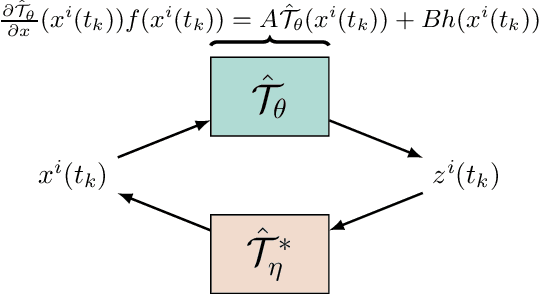
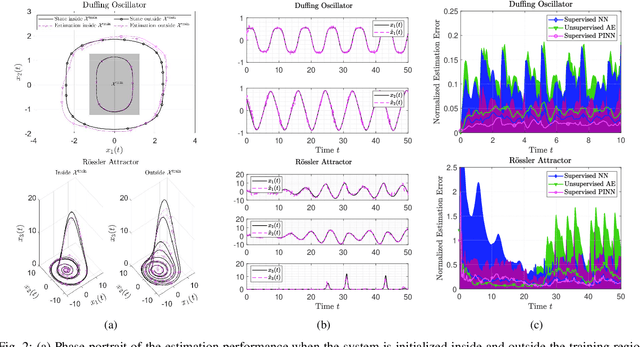
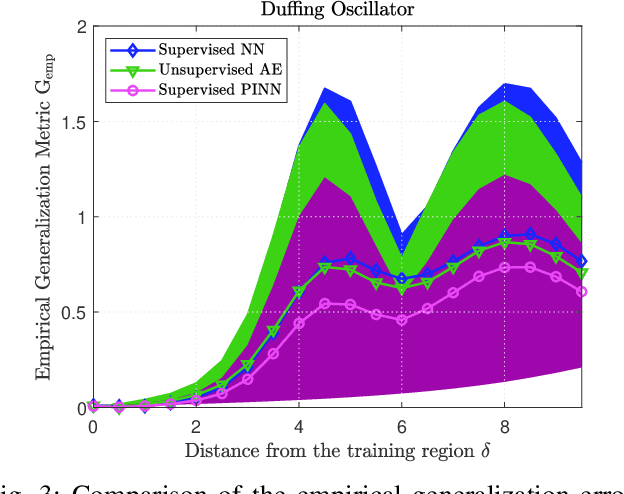
Abstract:The design of Luenberger observers for nonlinear systems involves state transformation to another coordinate system where the dynamics are asymptotically stable and linear up to output injection. The observer then provides a state estimate in the original coordinates by inverting the transformation map. For general nonlinear systems, however, the main challenge is to find such a transformation and to ensure that it is injective. This paper addresses this challenge by proposing a learning method that employs supervised physics-informed neural networks to approximate both the transformation and its inverse. It is shown that the proposed method exhibits better generalization capabilities than other contemporary methods. Moreover, the observer is shown to be robust under the neural network's approximation error and the system uncertainties.
Hierarchical Variational Auto-Encoding for Unsupervised Domain Generalization
Feb 22, 2021



Abstract:We address the task of domain generalization, where the goal is to train a predictive model based on a number of domains such that it is able to generalize to a new, previously unseen domain. We choose a generative approach within the framework of variational autoencoders and propose an unsupervised algorithm that is able to generalize to new domains without supervision. We show that our method is able to learn representations that disentangle domain-specific information from class-label specific information even in complex settings where an unobserved substructure is present in domains. Our interpretable method outperforms previously proposed generative algorithms for domain generalization and achieves competitive performance compared to state-of-the-art approaches, which are based on complex image-processing steps, on the standard domain generalization benchmark dataset PACS. Additionally, we proposed weak domain supervision which can further increase the performance of our algorithm in the PACS dataset.
More Industry-friendly: Federated Learning with High Efficient Design
Dec 16, 2020



Abstract:Although many achievements have been made since Google threw out the paradigm of federated learning (FL), there still exists much room for researchers to optimize its efficiency. In this paper, we propose a high efficient FL method equipped with the double head design aiming for personalization optimization over non-IID dataset, and the gradual model sharing design for communication saving. Experimental results show that, our method has more stable accuracy performance and better communication efficient across various data distributions than other state of art methods (SOTAs), makes it more industry-friendly.
Grid-GCN for Fast and Scalable Point Cloud Learning
Dec 20, 2019



Abstract:Due to the sparsity and irregularity of the point cloud data, methods that directly consume points have become popular. Among all point-based models, graph convolutional networks (GCN) lead to notable performance by fully preserving the data granularity and exploiting point interrelation. However, point-based networks spend a significant amount of time on data structuring (e.g., Farthest Point Sampling (FPS) and neighbor points querying), which limit the speed and scalability. In this paper, we present a method, named Grid-GCN, for fast and scalable point cloud learning. Grid-GCN uses a novel data structuring strategy, Coverage-Aware Grid Query (CAGQ). By leveraging the efficiency of grid space, CAGQ improves spatial coverage while reducing the theoretical time complexity. Compared with popular sampling methods such as Farthest Point Sampling (FPS) and Ball Query, CAGQ achieves up to 50X speed-up. With a Grid Context Aggregation (GCA) module, Grid-GCN achieves state-of-the-art performance on major point cloud classification and segmentation benchmarks with significantly faster runtime than previous studies. Remarkably, Grid-GCN achieves the inference speed of 50fps on ScanNet using 81920 points per scene as input.
Benchmarking time series classification -- Functional data vs machine learning approaches
Nov 18, 2019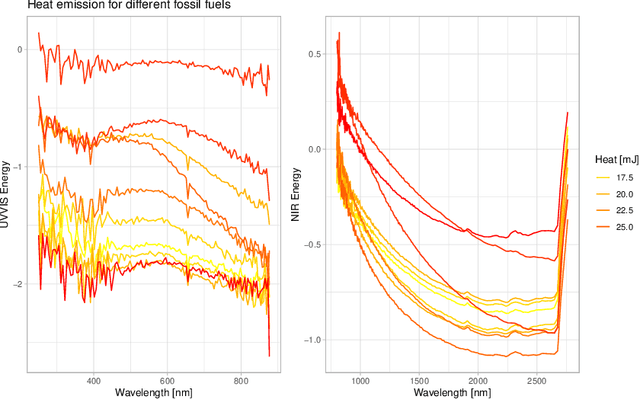
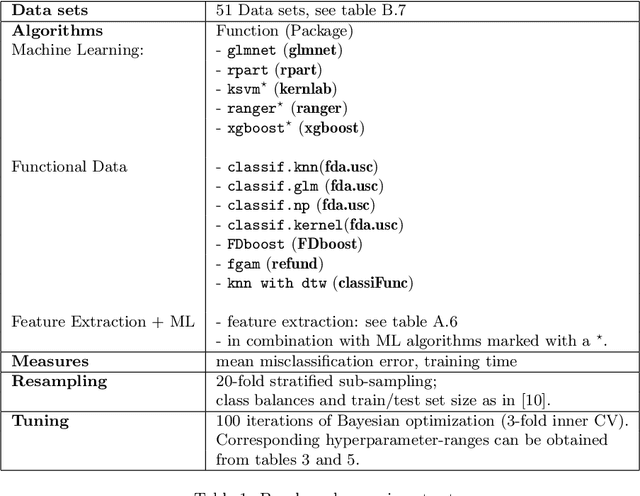
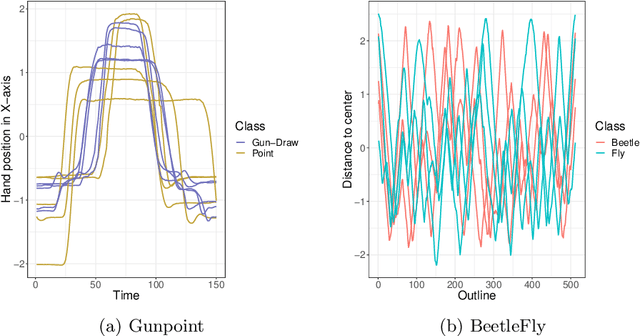
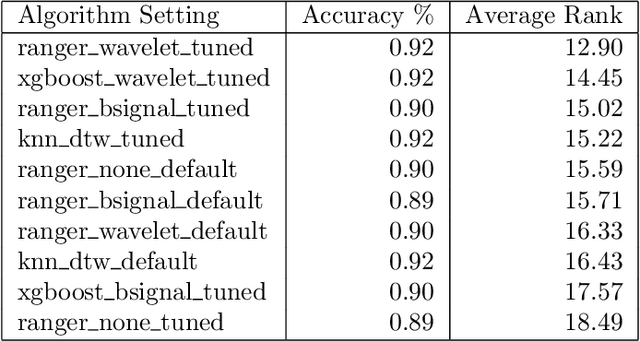
Abstract:Time series classification problems have drawn increasing attention in the machine learning and statistical community. Closely related is the field of functional data analysis (FDA): it refers to the range of problems that deal with the analysis of data that is continuously indexed over some domain. While often employing different methods, both fields strive to answer similar questions, a common example being classification or regression problems with functional covariates. We study methods from functional data analysis, such as functional generalized additive models, as well as functionality to concatenate (functional-) feature extraction or basis representations with traditional machine learning algorithms like support vector machines or classification trees. In order to assess the methods and implementations, we run a benchmark on a wide variety of representative (time series) data sets, with in-depth analysis of empirical results, and strive to provide a reference ranking for which method(s) to use for non-expert practitioners. Additionally, we provide a software framework in R for functional data analysis for supervised learning, including machine learning and more linear approaches from statistics. This allows convenient access, and in connection with the machine-learning toolbox mlr, those methods can now also be tuned and benchmarked.
Tutorial and Survey on Probabilistic Graphical Model and Variational Inference in Deep Reinforcement Learning
Oct 04, 2019



Abstract:Probabilistic Graphical Modeling and Variational Inference play an important role in recent advances in Deep Reinforcement Learning. Aiming at a self-consistent tutorial survey, this article illustrates basic concepts of reinforcement learning with Probabilistic Graphical Models, as well as derivation of some basic formula as a recap. Reviews and comparisons on recent advances in deep reinforcement learning with different research directions are made from various aspects. We offer Probabilistic Graphical Models, detailed explanation and derivation to several use cases of Variational Inference, which serve as a complementary material on top of the original contributions.
 Add to Chrome
Add to Chrome Add to Firefox
Add to Firefox Add to Edge
Add to Edge